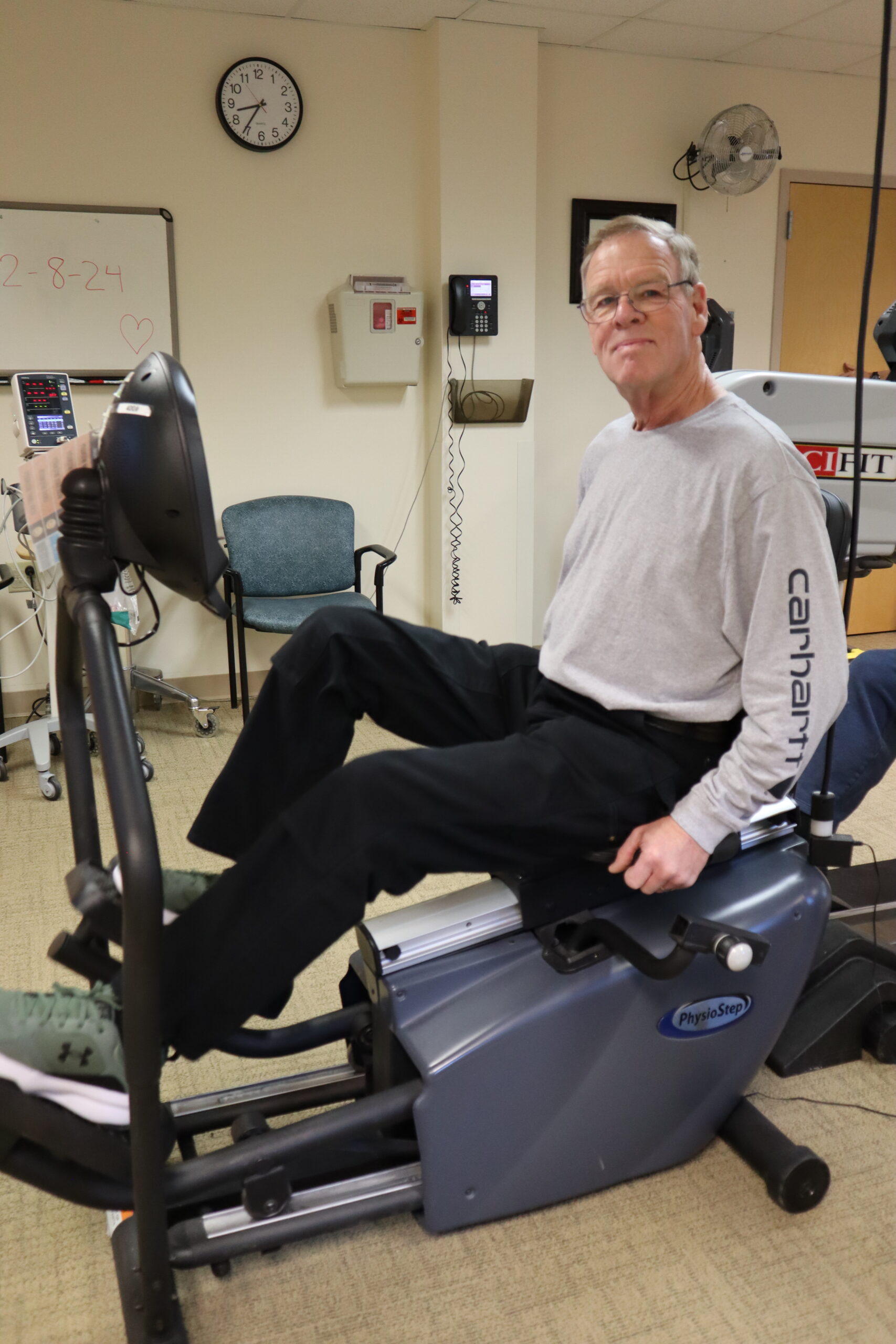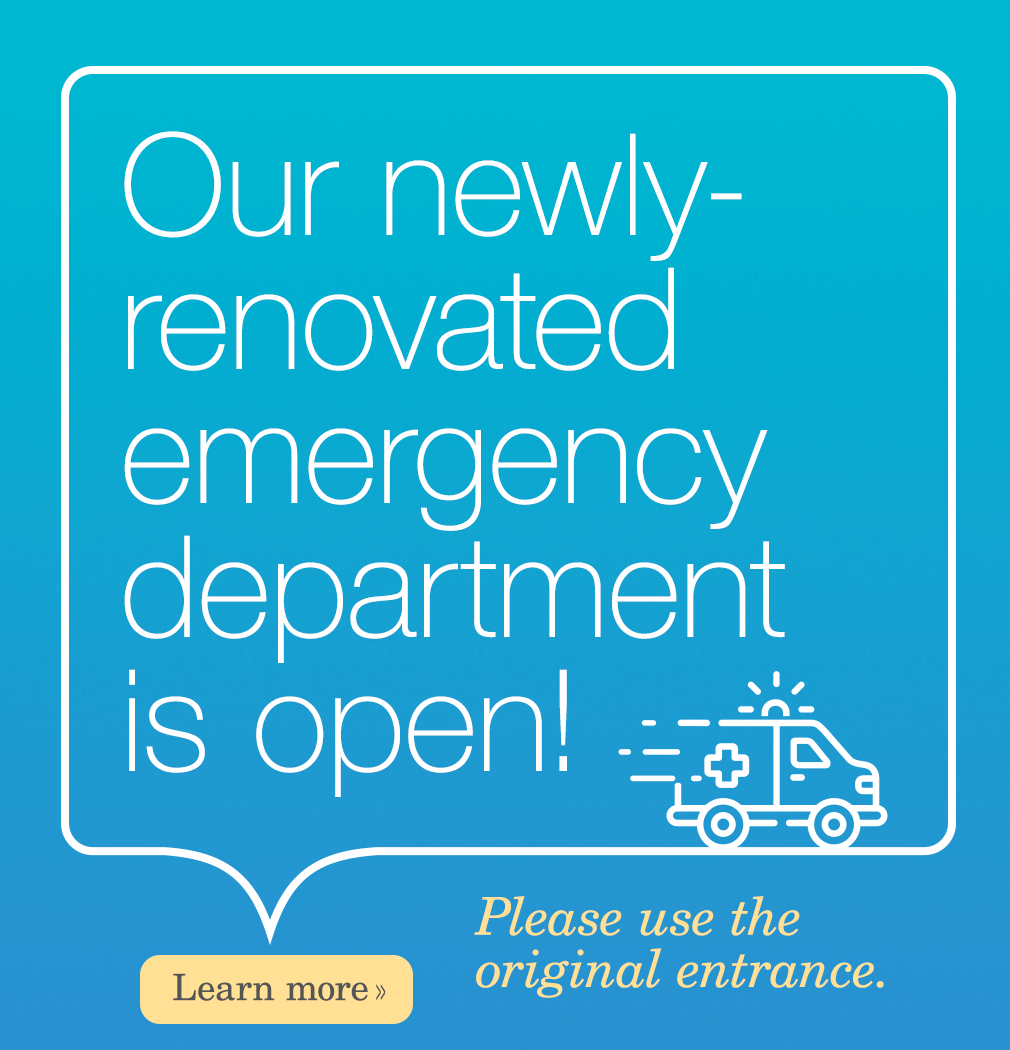

Cardiac Rehab: A Team Effort
Traumatic cardiac episodes or invasive, life-saving procedures can leave many patients feeling anxious over which steps to take on the road to recovery.
Such was the case for Dan Lang, of Swanton, who underwent open-heart surgery at UVMMC in February 2020.
“You’re not the same person anymore, after a surgery like that,” says Lang, who turns 68 this March.
His coronary artery bypass surgery helped create a new path for blood to flow around the blocked artery in his heart, after plans to place a stent were deemed insufficient to correct the issue.
“Going into surgery you don’t know if you’ll survive, but you hope so,” he says. “Afterwards, you think, what just happened?”
Sitting on an equipment bench inside Cobblestone’s Cardiac Rehabilitation gym, Lang recalls the past four years of uncertainty, pain, and the supportive recovery that has strengthened him beyond measure.
Back in 2020, having experienced an ongoing tickling sensation in his neck, he recalls, “One day while working on the farm my breathing became labored.”
Lang knew he was in trouble, telling his boss that he needed to get to the hospital.
A nuclear stress test at NMC’s ED revealed he was indeed at high risk, diagnosed with coronary artery disease (CAD), by cardiologist Dr. Prospero Gogo. It was suspected his CAD had been slowly building over 15 years.
Following the bypass surgery, Lang was sent home to recover – just as the COVID-19 pandemic got underway, causing much chaos in routine healthcare. Lang says he was unable to have in-person appointments with a cardiologist or undergo a rehabilitative program.
“I did my own rehab routine at home, as best I could,” he recalls, using his 180-foot driveway for walks. “I started out slowly and got where I was walking about ¾-mile at a time.”
Lang says another part of his healing was through the expression of gratitude towards the medical team that took care of him at UVMMC. “I wrote each of them a letter,” he says, including the thoracic surgeon, Dr. Donato A. Sisto, who performed his bypass.
“They saved my life, and I wanted to acknowledge that.”
With his strength waning, Lang says his post-surgery body weight decreased about 30 pounds from the loss of muscle. “The worst part of healing was my breastbone (sternum),” Lang explains, “it made a clicking sound during movement, for about two years.”
Yet, time went on and Lang stabilized. About three years later, back on the farm, he again felt the CAD tickle in his neck – this time accompanied by pressure in his chest.
Another nuclear stress test indicated he had a severely blocked left anterior descending artery (LAD). As the largest coronary artery, the LAD supplies a lot of blood to the left side of the heart, and its blockage can lead to a fatal type of heart attack known as the ‘widow-maker.’
Thankfully for Lang, a balloon stent procedure was successful, clearing his flow and preventing any myocardial infarction.
Anticipating the opportunity to attend NMC’s Cardiac Rehab this time around, Lang was pleased and relieved when he got the phone call from John Burke, MS, ATC, NBC-HWC, the trainer he would be working with during his 36-session rehabilitation at Cobblestone.
Lang joined NMC’s outpatient based Cardiac Rehab program in mid-August 2023. The program, certified by the American Association of Cardiovascular and Pulmonary Rehabilitation, is offered as a group class three days per week, for one hour. The class combines exercise, education and socialization to help individuals that have experienced life-changing cardiac events.
Patients like Lang work closely with the program’s nurse, Katy Magnuson, RN; athletic trainer, John Burke; and dietician, Jamie Meltzer, RDN, to create an individualized treatment plan, to meet goals and adopt healthy lifestyle changes.
“There are not enough words in the English language to describe what an impact Cardiac Rehab has made,” says Lang.
“I believe the program is a perfect blend of exercise, education, socialization, nutrition information and being able to see and hear how others with a similar diagnosis have made tremendous gains,” explains Magnuson.
“We feel as if this program empowers individuals and provides hope for a feeling of ‘I can do this,’” she says.
Patients who have experienced an MI, a bypass, valve or stent surgery, heart or lung transplant, or those diagnosed with congestive heart failure within the year are eligible. “Referrals are made to our program, but ultimately it’s the patient’s decision,” says Magnuson.
“Dan is such an incredible force of positivity. He radiates approachability, kindness and willingness to help and encourage everyone,” she says.
“This is not just a job for Katy, John or Jaime,” says Lang. “They’re loving, caring, and kind – and that is attractive. These people are real people, and they care about you.”
The atmosphere in the gym is always welcoming and supportive, according to Lang.
“I enjoy the social aspect of coming to open gym, it’s like developing the family relationship,” he says.
“Dan completed the full cardiac rehab program and has transitioned to the open gym program at Cobblestone. While in cardiac rehab, he made many changes to his diet and exercise,” Magnuson says.
“Giving up ice cream was hard,” says Lang, swapping it for yogurt topped with raspberries and blueberries. Lang brought his wife in to meet with Meltzer, to learn about his dietary changes. “Since she does most of the grocery shopping and cooking, it is good for her to enforce a heart-healthy diet,” he says.
“My wife is my Rock of Gibraltar. She takes care of all of my medicines, she keeps me on the up and up.”
Cardiac Rehab remains a team effort, and for Lang, it gave him purpose and a reason to get up and get moving.
“Rehab has done wonders for me – mentally, emotionally and physically. It gave me a chance to heal, to strengthen and to change; a continuous purpose,” he says.
“Dan has raved about the program since day one and has even convinced two of his closest friends to participate in cardiac rehab following their cardiac events,” says Magnuson.
“His positive attitude, determination, motivation and sense of humor were contagious. The other patients and cardiac rehab staff truly enjoyed his presence.”
Cardiac rehabilitation has demonstrated benefits, yet fewer than 20-percent of eligible patients participate, according to the American Heart Association. Support to rehabilitate, recover and realize a new life after a cardiac event or diagnosis is necessary and available.
“Get up and do something. Get off the couch, take the dog for a walk. Or, give rehab a try – you have all to gain,” says Lang, to those feeling anxious about their recovery, especially after a severe illness or surgery.
“People need to know about this program,” he says. “If it saves someone’s life, then I’m a happy camper.”
Story & Photos: SARAH PARSONS WEST for Northwestern Medical Center

